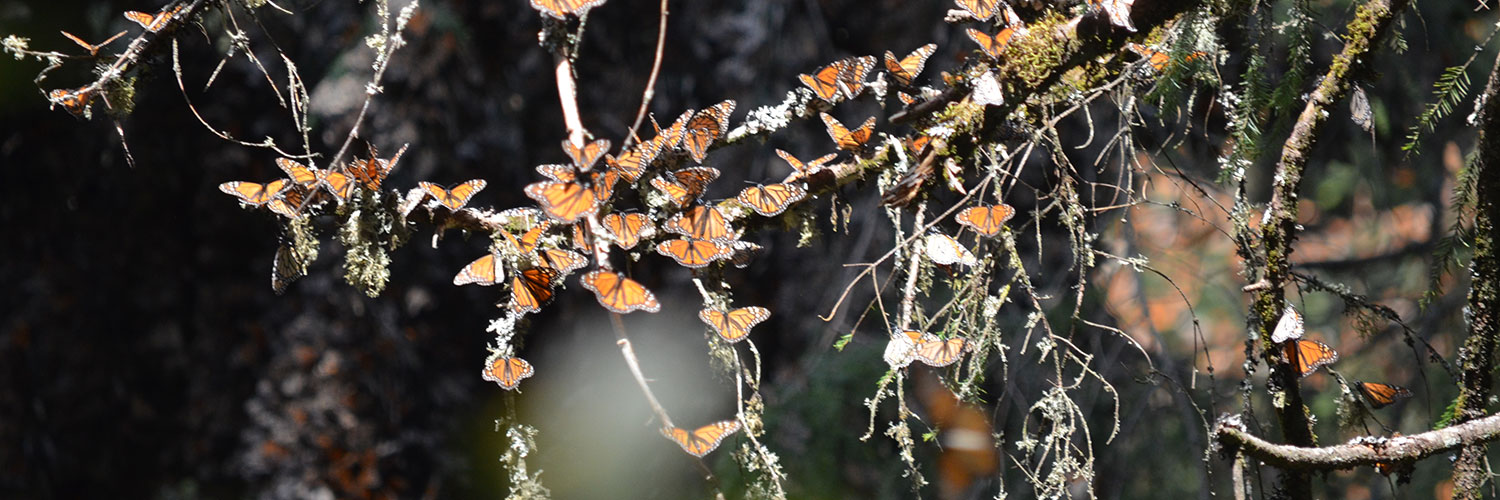
Migration
Map based on information from Monarch Watch
Weighing less than a gram, monarchs undergo an amazing multi-generational migration
that can span the three countries of North America, over distances of up to 5,000km (3,000 miles). There are two recognized migratory routes: Eastern and Western.
Eastern migration
First-generation monarchs are the offspring of the monarchs that overwinter. They are born in northern Mexico and the southern United States and fly north.
Second-generation monarchs are born in the central United States and migrate north.
Third-generation monarchs are born throughout the northern part of the species’ range. They can either emerge early enough to produce another summer generation (fourth generation), or emerge late and migrate to the overwintering sites in Mexico.
Fourth-generation monarchs live up to nine months. They enter reproductive diapause and fly up to 5,000 kilometers (3,000 miles) to specific, perennial locations in Mexico. There, they overwinter for about four months before flying north to lay eggs in northern Mexico and the southern United States, producing the first generation.
Western migration
Monarchs in the western United States, especially those in California, Nevada, Idaho, and Oregon, migrate to their winter roosts in the eucalyptus, Monterey cypress, and Monterey pine trees along the Pacific Coast of California, beginning in late October. Little information is yet available on this migratory route.
Based on information from Monarch Lab